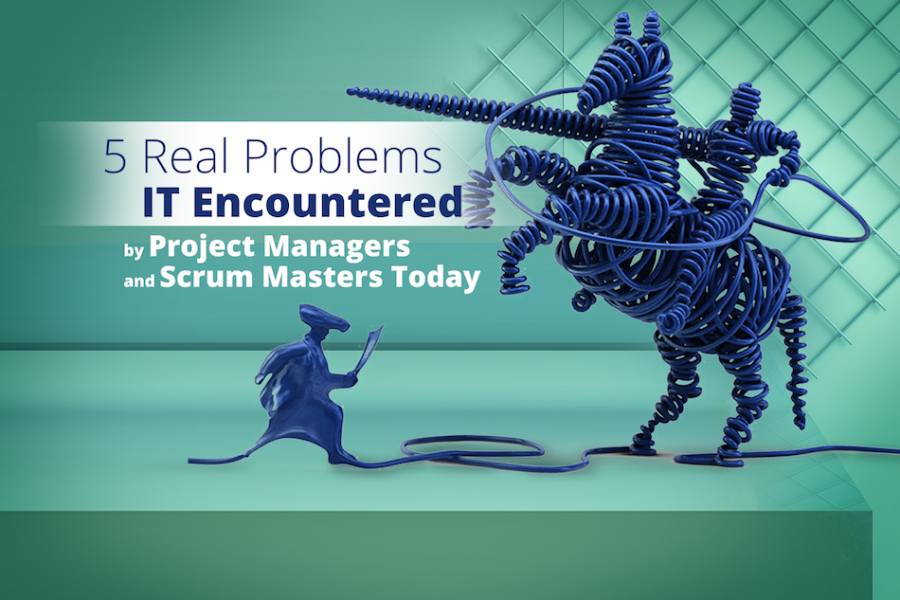
Like most jobs across industries, the problems that are related to specific jobs will depend heavily on the context of the project and the organization.
For an app development provider that’s following a traditional business model, the major issues faced by project managers and scrum masters usually have to do with embracing an agile delivery model.
This might sound a bit strange, but it does happen because some technology companies that were founded in the 1970s and 1980s also operate as a mobile development provider today.
As they are quite comfortable following a traditional business framework, adopting new working models that celebrate short development cycles and flattening hierarchies might come as a massive shock to the system.
What we’re talking about here is basically change on a massive scale and this will be a huge challenge for enterprises that have been around for decades.
This is the primary reason why these companies are often disrupted by startups who are well versed in using cloud platforms and agile processes to deliver products in a matter of weeks, not years.
But even project managers and scrum masters at startups like an app development service provider will encounter some problems during various iterations. Let’s take a look at the top five!
-
1. Failure to comprehend the agile and scrum development processes
Something that often comes up if the failure to properly understand how agile development works. In may come as a surprise that there are a large number of software engineers out there who don’t realize that the agile approach will require more discipline and structure than traditional projects.
As a result, if you’re working with a new development team, it might be a good idea to reaffirm the importance of planning and documenting everything. Most of the time clients will make changes during the development cycle, so you need to be prepared to respond to that.
As a scrum master or a project manager, you have to have a start date and end date for each sprint to control and monitor the project. However, it’s important to note that there is no such thing as being 90% complete. At the end of the sprint, something is only done and dusted if you can potentially ship the product.
-
2. Creating and maintaining synergy across the team
Creating synergy in your team can also be a challenge. Even if you set scrum rules by the textbook, there is no guarantee that the rest of the team will actually follow them.
Achieving this might require some creativity to get everyone on board. As mentioned earlier, everyone grasp of the agile methodology can be drastically different, so again you might have to teach (but not preach) agile concepts to make sure that everyone is on the same page.
-
3. The hype surrounding scrums
There is a lot of hype surrounding the agile methodology and scrums. It’s often touted to not only solve a few problems but all the issues that plague traditional development projects.
This is simply not true! Instead, this approach deals with problems in a different manner. For example, when you follow the agile methodology, you will be able to identify problems much sooner.
-
4. Properly defining and prioritizing requirements
If you’re engaged in a scrum, it’s the job of the product owner to define and prioritize requirements. However, doing this can be extremely difficult as it demands a combination of technical knowledge, business analytical skills, impudence, and communication skills to achieve it.
These traits are rarely found in a single individual. As a result, it comes down to the project manager or scrum master to compensate for it.
-
5. The transfer of risk
In a traditional development project, you will get the client’s project requirements and respond with a budget and a timeline. Once everything is agreed upon, it comes down to the project manager to deliver the product on time and within budget.
If things don’t go according to plan, the blame will lie right at the feet of the project manager (in a psychological sense). The agile methodology recognizes the uncertainties that are inherent in delivering these projects, so it has a different approach to handling risk.
Agile demands the client to share some of the responsibility. This means that it requires them to accept the fact that some project requirements might not be delivered on time.
This doesn’t always work because sometimes you will come across some clients who aren’t willing to accept this responsibility. This can be attributed to the traditional culture of their organization.
As a result, it’s safe to say that incorporating the agile approach to development might be a massive challenge for some project managers and scrum masters, even in the digital age!
LOOKING TO HIRE AN EXPERIENCED SCRUM MASTER OR OUTSOURCE YOUR PRODUCT DEVELOPMENT TO A PROFESSIONAL SERVICE PROVIDER LIKE DIGI117? GET IN TOUCH!









